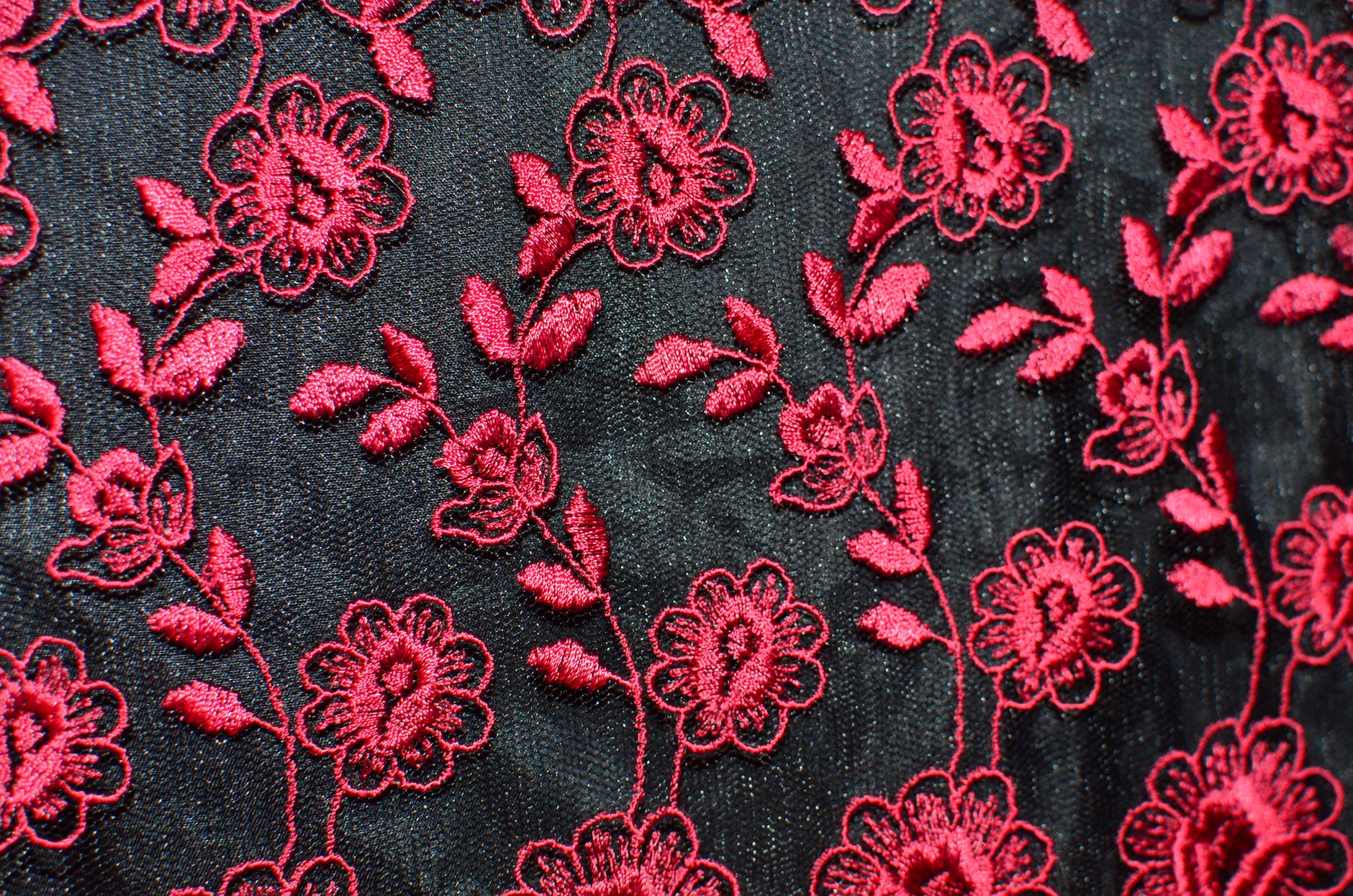embroidery patterns: from traditional to modern designs
Embroidery is a popular form of decorative needlework that involves creating intricate designs with stitching on fabric. It has been practiced for centuries and has evolved from traditional techniques to modern interpretations. In this article, we will explore the history of embroidery, different types of stitches, popular techniques, and the shift from traditional to modern designs.
What is Embroidery?
Embroidery is the art of embellishing fabric with needle and thread, creating beautiful designs and patterns. It is a versatile craft that can be used to decorate various items such as clothing, accessories, home decor, and more. Embroidery stitches can be simple or complex, depending on the desired design.
History of Embroidery
The history of embroidery dates back to ancient times, with evidence of decorative stitching found in artifacts from Egypt, China, and India. It was initially used to add visual interest to clothing and textiles. Over the centuries, embroidery spread across different cultures and regions, each contributing their unique styles and techniques.
Types of Embroidery Stitches
Embroidery stitches are the building blocks of any design, and there are numerous stitches to choose from. Some of the basic embroidery stitches include the backstitch, running stitch, satin stitch, and French knot. Each stitch creates a different effect and can be combined to achieve intricate patterns and textures.
Popular Embroidery Techniques
There are various embroidery techniques practiced worldwide, each with its own distinct characteristics. Some popular techniques include cross-stitch, whitework, blackwork, and tapestry embroidery. These techniques differ in terms of stitch count, required skill level, and visual outcome.
Traditional Embroidery Designs
Traditional embroidery designs encompass a wide range of styles and motifs influenced by cultural heritage. Throughout history, different eras and regions have produced unique embroidery patterns. From elaborate motifs of the Renaissance period to the intricate cross-stitch samplers of the Victorian era, traditional designs hold historical and cultural significance.
Embroidery Patterns through the Ages
Embroidery patterns have evolved alongside changes in fashion and design trends. In the Middle Ages, religious motifs and floral patterns were popular. During the Renaissance, ornate designs inspired by nature and biblical scenes emerged. The Victorian era saw the rise of embroidery samplers, which were used to teach young girls different stitches and techniques.
Traditional Cross Stitch Patterns
Cross-stitch is a popular embroidery technique that involves creating X-shaped stitches to form a design. It is often used to create intricate patterns and motifs. Traditional cross stitch patterns feature traditional motifs such as flowers, animals, and geometric shapes.
Folk Embroidery Patterns
Folk embroidery patterns are derived from the traditional designs of rural communities. Each region has its own distinct style and motifs. Folk embroidery often incorporates vibrant colors, intricate stitches, and storytelling elements.
Modern Embroidery Trends
In recent years, embroidery has experienced a resurgence in popularity, with a modern twist. Contemporary embroidery designs embrace new aesthetics and techniques, appealing to a broader audience. Modern embroidery combines traditional motifs with innovative compositions, creating a unique fusion of old and new.
Contemporary Embroidery Designs
Contemporary embroidery designs often incorporate abstract elements, bold colors, and experimental techniques. Artists and embroiderers push the boundaries of traditional stitching, creating unique and modern pieces that reflect their individual style and artistic vision.
Modern Folk Embroidery Cross Stitch Patterns
Modern folk embroidery cross stitch patterns combine the timeless appeal of folk motifs with fresh, contemporary designs. These patterns provide a modern take on traditional cross stitch, bringing together the charm of the old world with a modern sensibility.
Embroidery Patterns for 2021 and Beyond
As we enter a new era, embroidery patterns continue to evolve. The embroidery community is constantly experimenting with new materials, techniques, and designs. Embroidery trends for 2021 and beyond include geometric patterns, minimalistic designs, and the incorporation of mixed media.
Exploring Tapestry Embroidery
Tapestry embroidery is a technique that mimics tapestry weaving using stitching. It creates dense, textured designs that resemble woven fabric. Tapestry embroidery can be used to create intricate scenes, landscapes, and images.
Tapestry Embroidery Basics
To practice tapestry embroidery, one needs a sturdy fabric, such as linen, and a tapestry needle. The stitches used are typically long and cover a significant area of the design. Tapestry embroidery allows for detailed color blending and shading.
Creating Intricate Tapestry Embroidery Designs
To create intricate tapestry embroidery designs, embroiderers often use a chart or pattern as a guide. The chart indicates which colors to use and where to place each stitch. This method ensures that the final result is accurate and visually appealing.
Combining Tapestry and Cross Stitch Techniques
Embroiderers also have the option of combining tapestry embroidery with cross stitch techniques. This combination results in a textured design with intricate details achieved through the use of different stitches and techniques.
Embroidery Ideas and Inspiration
Embroidery is a versatile craft that allows for personalization and creativity. Here are some ideas and inspirations to get you started on your embroidery journey:
Personalizing Embroidery Projects
Add a personal touch to your embroidery projects by incorporating initials, names, or meaningful quotes. Embroidered monograms on handkerchiefs, pincushions, or clothing make for thoughtful and personalized gifts.
Embroidery for Home Decor
Embroidery can be used to embellish home decor items such as pillows, curtains, tablecloths, or wall hangings. Choose designs and colors that match your interior style and create unique pieces that add a touch of elegance to your home.
Embroidery as a Therapeutic Hobby
Embroidery is not only a creative outlet but also a therapeutic hobby. The repetitive nature of stitching can be calming and meditative, promoting relaxation and mindfulness. Pick up your needle and thread to unwind after a long day or to combat stress.
By exploring the history, techniques, and designs of embroidery, you can embark on a creative journey that connects you to a rich tradition while allowing for personal expression. Whether you choose to embrace traditional patterns or explore modern interpretations, embroidery offers endless possibilities for creativity and self-discovery. So, grab your hoop and threads, and let your imagination soar!
